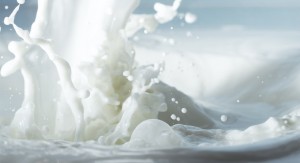 Farmers in the British dairy sector will have to adapt and change to be able to grow in the present volatile market conditions, writes Chris Harris of the Dairysite.com. Speaking at the National Farm Management Conference in London, Andy Thompson, the EU director for the genetics company Genus, said that not only will benchmarking be needed, but there will also need to be an integration of leadership, behaviour, strategic planning effective partnerships to manage in volatile situations.
Farmers in the British dairy sector will have to adapt and change to be able to grow in the present volatile market conditions, writes Chris Harris of the Dairysite.com. Speaking at the National Farm Management Conference in London, Andy Thompson, the EU director for the genetics company Genus, said that not only will benchmarking be needed, but there will also need to be an integration of leadership, behaviour, strategic planning effective partnerships to manage in volatile situations.
Future succes
He said that scale, geography, breeding and local resources will also play their part in the future success of the UK dairy sector. However, he stressed that output is not the key to success but rather profit needs to be the focus. Mr Thompson said that earlier this year good milk prices had seen production expand, however the ban on import by Russia and a downturn in the Chinese economy and a slowdown in export to China had hit the sector. He added that the abolition of quotas had allowed the UK dairy herd to grow and 2015 was a record year for spring milk production because of the lower costs involved in spring calving.
Farm management
However, Mr Thompson said that “litres per cow” was not the answer to growing success. And he added that some of the most profitable farms only average 8,500 litres per cow. He said the key was ensuring that the farm is managed well and production methods were the best, such as having good fertility and low mastitis rates, and having the right cow in the right system. Mr Thompson added that the profitable dairy farms also manage and produce good forage, and they have limited labour, but manage it well. “They understand what they are not good at and they subcontract it,” he told the conference. He added that he expects the industry to continue to consolidate, but while producer numbers will fall, the herd sizes are expected to grow and yields will rise.
Dairy in Ireland
In Ireland, the dairy sector has seen strong growth and expansion and is at the heart of the growth of the agricultural sector. Since 2009 it has grown by 45 per cent in value, Thia Hennesey from the Rural Economy Research Centre in Ireland told the conference. And a government initiative, FoodWise 2025, has set a target for added value food expansion of 70 per cent. As in the UK, the removal of the quota system saw milk production rise by 10 per cent in Ireland despite a sharp drop in prices. But the Irish sector also had to face harsh market challenges, where weather events had hit the industry hard in 2012 and 2013. Ms Hennesey said that farmers in Ireland saw price as the highest risk factor in the sector followed by production risks, personal risk, institutional risk and financial risk.
Volatility
She said that despite the upward trend in income since 2007 in the dairy sector, there has also been a huge rise in volatility with prices going up and down. She added that Irish dairy farmers are managing risk through diversification and mitigating it through pricing models. The sector is also using forward contracts, and to an extent futures and options, to manage volatile prices. Farmers have been helped by some government intervention in allowing farms to average their tax over five years. She concluded that the structure of the Irish dairy sector, which is based on cooperatives along the production and supply chain, also has a stabilising effect in a volatile market.
Thanks to the Dairysite.com for this summary!

